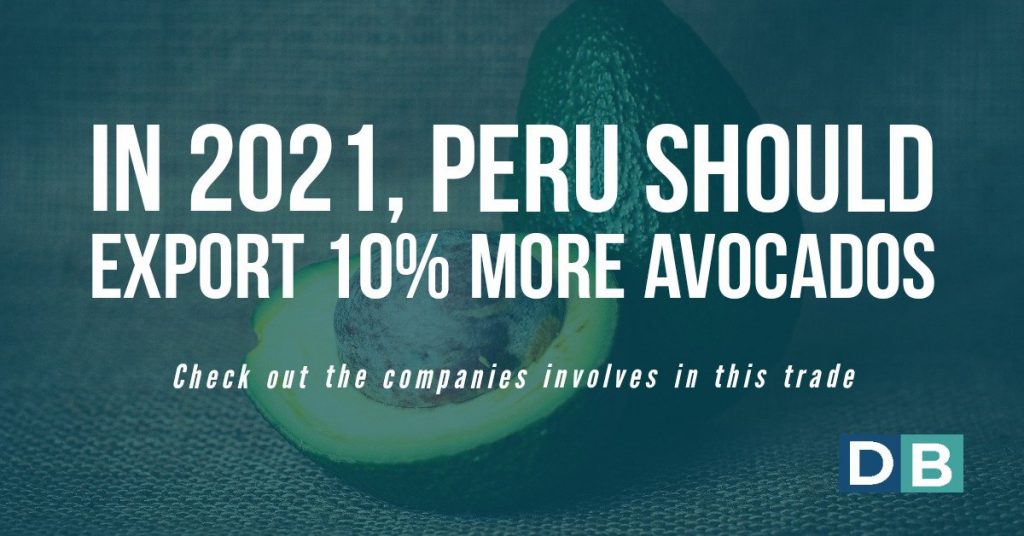In 2021, Peru should export 10% more avocados
Peru’s avocado crop for the 2021 calendar year is estimated at 560,000 tons. Peru grows mainly two types of avocados. Hass, of which 95% are intended for export. And Fuerte, mostly for local consumption. The total cultivation area is around 35,000 hectares. Of this, 27,000 ha are certified for export. The average expected yield per hectare is 14 to 17 tonnes. The La Libertad and Lima regions account for more than 40% of the country’s total avocado farming.
Most avocado farms can be found along Peru’s desert coast. Larger producers use water from the Andes via federal water channels. They carefully administer this water. Growers combine drip irrigation, sensors, and irrigation software.
Facts
Consumption
Peru’s local avocado consumption is estimated at 150,000 tons per year. Each Peruvian eat about five kgs. They prefer greenskin varieties like Palta Fuerte. Prohass is Peru’s Hass avocado producers association. It’s currently implementing marketing programs to increase domestic Hass consumption.
Trade
In 2021, Peru’s avocado exports should reach 450,000 tons. That’s ten percent more than last year. In 2020, 30% more avocado were exported than the previous year, reaching a record 410,463 tons. International avocado prices fell to $1.88 (€1.55) per kg in 2020 from $2.40 (€1.97) in 2019.
This was mainly due to an oversupply. Peru’s global avocado exports may have climbed in 2020. But exports to the United States fell by 22% in value and 9% in volume to $179m (€147.5m) and 78,665 tons. Better prices in other markets were the root of this change.
Job opportunities
Since 2000, Peru’s acreage of high-quality exports has quadrupled to almost 200,000 hectares. The Promotion of Horticulture Law has helped create employment opportunities for women. These include technical and managerial posts. Women now make up about 25% of the workforce in the country’s horticultural export sector.
La Libertad and Ica have become Peru’s agricultural powerhouses. These regions have clearly benefited the most from the horticultural promotion law. These two areas account for 27% of Peru’s total fruit and vegetable exports. They also have an almost zero unemployment rate
Want to obtain more information?
If you want to analize or know about different India markets just contact us:
-To know who the companies have been; analyze the monthly behavior of the products; Or if you want personalized assistance for your business; You can write to sales@imexdbusiness.com or datasourcing@imexdbusiness.com
